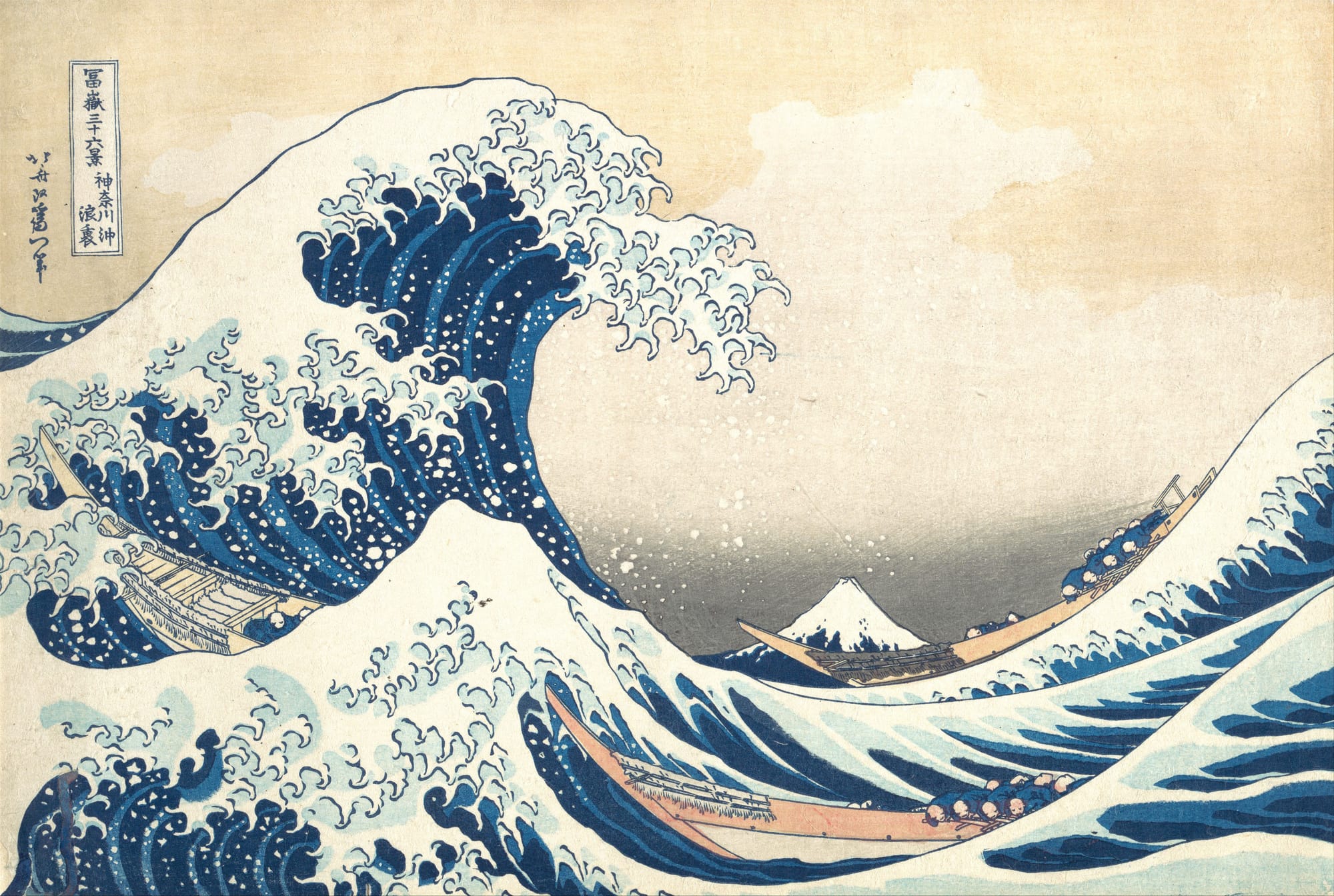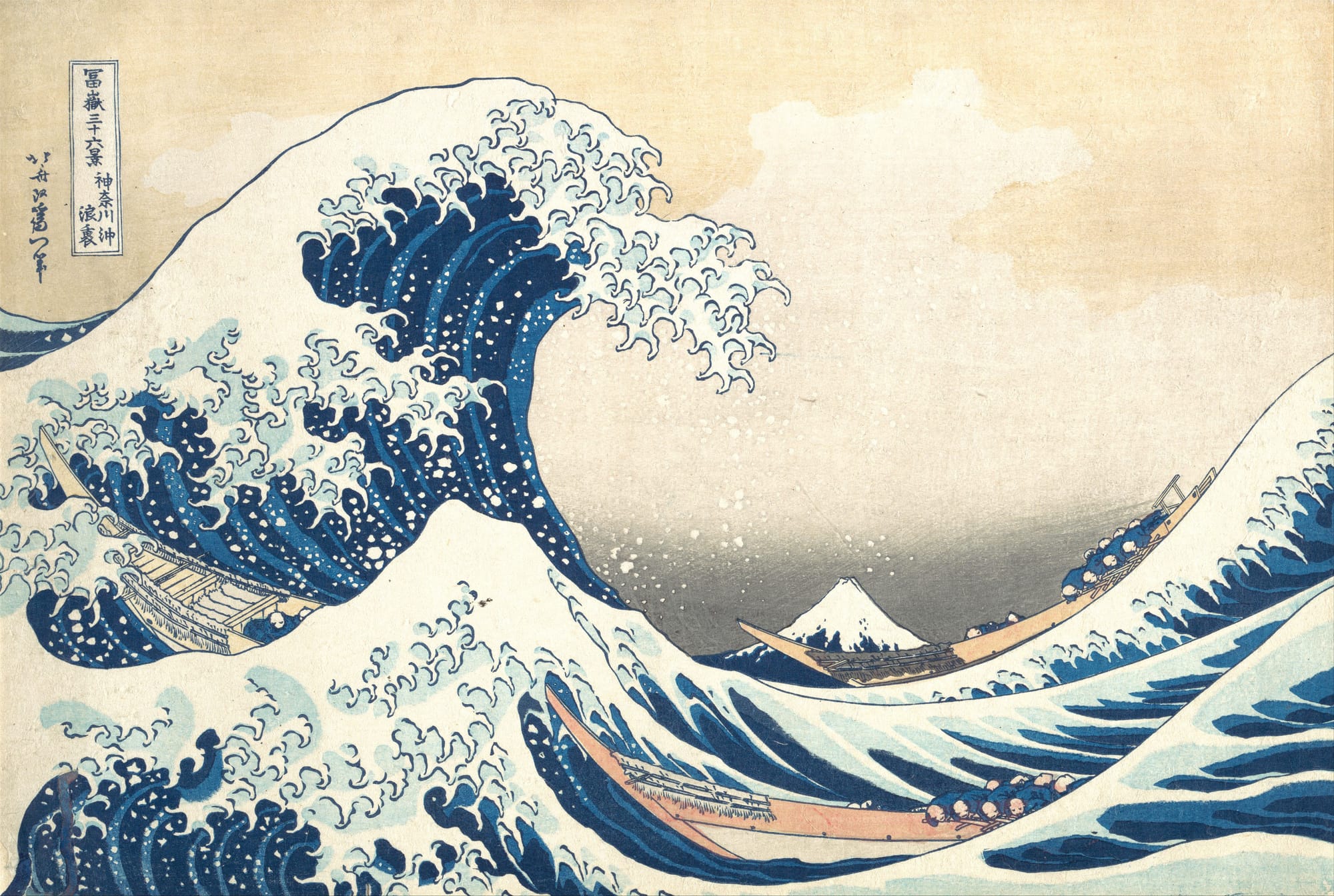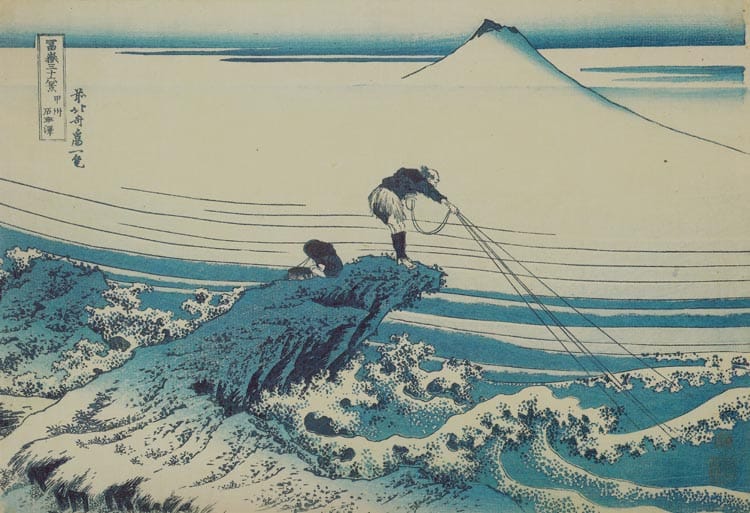Endless Waves of Love
Some thoughts about my new niece's name.

Note: February is going to be Tulip month.
Week 1: The Confusing Linguistic Origins of Tulip
Week 2: Rethinking the Tulipmania of the 1630s
Week 3: Tulips in Art
Week 4: Tulips and Cultural Symbolism
But first...
Congratulations and Mazal Tov to Colorphilia subscribers Laura and Menachem Butler on the birth of their daughter (and my newest niece), Galit Anna.
Galit means "wave" in Hebrew, from the word "גל" (gal).
After holding her (wearing a purple onesie) for the first time yesterday, not an hour after being named, my mind became awash with colorful associations.
Wave
In her honor, I wanted to share The Great Wave off Kanagawa (1831), the woodblock print by Katsushika Hokusai.

It was the first in Hokusai's series Thirty-six Views of Mount Fuji (1830-1832), and has the added signficance of being the first aizuri-e or Japanese woodblock print featuring the newly imported Prussian Blue.
To prints coloured by different processes specific names are given. Thus those tinted by hand, if specially in yellow, are termed tanye; with lacquer colours, urushiye; early prints tinted in red only, beniye. A special method of printed colouring in blue; blue and red; or blue, red and green, in imitation of Chinese porcelain colours, has several times been referred to; those in blue are termed aizuri.
– Edward Fairbrother Strange - Japanese Colour Prints (1923)
I was a little fascinated by the concept of "aizuri-e" and wondered if this was some sort of play on the "azul" or "azur" of the European languages. It's not that crazy a notion. The first Japanese dictionary (for European languages) was written in Portuguese by missionaries in 1603, and is the first place I can find the term "aizuri".
"Ai 藍" refers to the indigo plant, and from there, the color blue. Silks printed with blue figures, according to a 1881 dictionary were called "awo-kusa-zuri". But "awo-kusa" means green, as in fresh plants or grass. The root "awo" (pronounced "ao") has the same associations of green ("young", "fresh"), but awo-awo means "everywhere blue", with the "akatsukiga awo-awo" meaning the "blue morning sky".
Beautiful Love
"Ai (愛)" also means "love". The phrase Kono ai ni hikasáru is translated as "one allows onself to be guided by love for a child". "Ai (娃)", when used in names also means "beautiful" or "beautiful girl".
But there is another level. "Ama (or Ame)" (blue-looking) was comprised of "awo" (blue/green) and "ma" (eye). For anyone who has ever taken a Latin class, seeing the word "ama" will remind you of the imperative of amare, or love. In Japanese, the word "Ama/Ame" includes "sky", "heaven" or even a "fisherman".
It brings me back a year to when I wrote about Glaucus, the now-immortal fisherman. Another example of blue waves in the same series by Hokusai is Kajikazawa in Kai Province.

Gleaming and Bright
But there is another connection with the GL- root and the sea.
As I pointed out in On the Color of Ancient Wine, the commonly mistranslated line in Homer's Odyssey of oînops póntos or "wine-eyed sea", includes a reference to the "bright-eyed Athena" showing the way, which uses the same root as Glaucus - γλαυκῶπις. A better translation may be "gleaming", or even "glittering".
In many languages, GL- has to do with light-words. For example, glaed in Old English is "shining; bright; cheerful; glad", which results in the Middle English glad meaning
(a) Bright, shining; (b) of flowers: bright, fresh, beautiful.
Superhero
Gali (גלי), as her parents call her, is obviously special. And she can be whatever she wants to be when she grows up. From her mother, she may inherit the genes to be a Superwoman. Or she may choose to follow in the footsteps of Gal Gadot and be a Wonder Woman.
But we should not limit her potential.
Gali can be whatever superhero she chooses, as long as it is in the DC Comic universe. To that end, in his dictionary, Marcus Jastrow gives one of the meanings for גלי as "flash" (Targ. Is. XLI, 2; 25; Targ. Hos. XI, 11).
Blessing
May Gali to be a beautiful source of light and happiness, be filled with endless waves of love, and contain unlimited potential.
